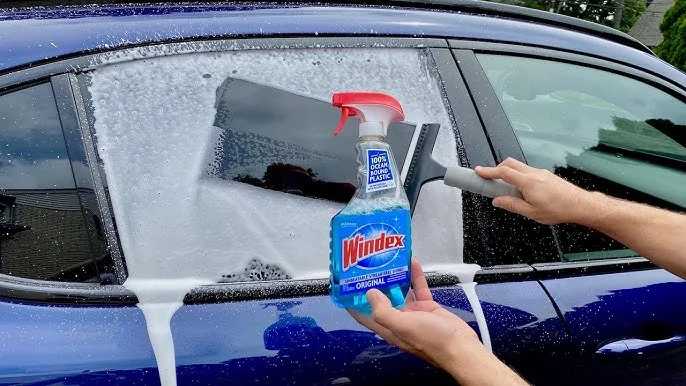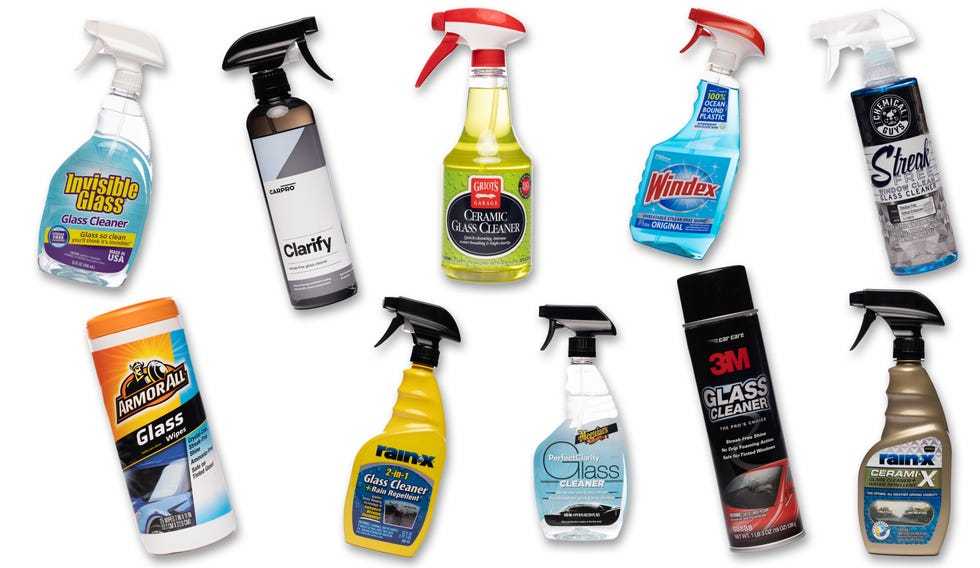Yes, auto glass can often be polished to remove minor scratches, water spots, and cloudiness, restoring clarity and a more polished look. However, deep chips or cracks usually require professional repair or replacement. Polishing can be an effective DIY solution for minor issues, saving you time and money, but know when to seek expert help to avoid further damage.
Auto glass is an essential part of your vehicle, providing visibility and safety. Over time, it can develop surface imperfections like scratches, water spots, or haziness that obscure your view. Many drivers wonder if they can simply polish their windshield or windows to improve their appearance and performance. The good news is, in many cases, auto glass can indeed be polished to restore clarity and shine. Doing so is a relatively easy and cost-effective way to extend the life of your glass and maintain a clear view of the road. Just keep in mind that polishing is best suited for minor surface issues and not for severe damage that requires professional attention.
Can Auto Glass Be Polished? An In-Depth Guide
Understanding Auto Glass and Its Surfaces
Auto glass acts as a shield for drivers and passengers, protecting them from wind, debris, and weather. Its surface is made from tempered or laminated glass, designed to be strong and durable. Over time, however, the surface can develop imperfections such as scratches, cloudiness, or haze. These flaws can impair visibility and detract from the car’s appearance.
Auto glass has a smooth, hard surface that resists many types of damage. Yet, exposure to environmental elements like sun, dirt, and salt can cause the surface to become cloudy or develop small scratches. Recognizing these signs is key to knowing when polishing could be beneficial. Proper maintenance can extend the lifespan of your auto glass and keep it looking clear.
Can You Polish Auto Glass? What You Need to Know
Yes, auto glass can be polished in many cases. Polishing can remove minor scratches, reduce haze, and restore clarity, making your windshield look like new. However, it’s important to understand the types of damage that can be fixed with polishing.
Minor surface scratches and cloudiness are usually easy to correct, but deep cracks or chips cannot be polished out. Using the wrong techniques or products on damaged glass can worsen the problem. Always assess the severity of the damage before attempting to polish your auto glass.
Types of Damage That Auto Glass Polishing Can Address
Auto glass polishing primarily targets superficial imperfections. These include:
- Surface Scratches: Small, superficial scratches caused by debris or improper cleaning. These can often be polished out to improve clarity.
- Haze and Cloudiness: Caused by dirt buildup or minor aging. Polishing can help remove this haze and restore transparency.
- Minor Water Spots: Water spots from mineral deposits can sometimes be polished away.
Deep cracks, large chips, or shattered glass require professional repair or replacement and should not be attempted through polishing.
Materials and Tools Used for Auto Glass Polishing
Different products and tools are designed specifically for auto glass polishing. Using the right ones ensures effective results and prevents damage. Some of the most common materials include:
- Glass Polishing Compound: A specially formulated abrasive that gently removes surface imperfections.
- Microfiber Cloths: Soft cloths that help apply polish evenly without scratching the surface.
- Polishing Pads: Attachments that work with drills or polishing machines to buff the glass.
- Cleaning Solutions: To remove dirt and debris before polishing begins.
Proper tools and high-quality compounds are essential for achieving professional-looking results safely.
Step-by-Step Process for Polishing Auto Glass
Follow these steps to polish your auto glass effectively:
Prepare the Surface
Start by cleaning the glass thoroughly using a glass cleaner and microfiber cloth. Remove all dirt, dust, and debris to prevent scratching during polishing.
Apply the Polishing Compound
Using a clean cloth or polishing pad, apply a small amount of the compound to the affected area. Work in small circular motions to evenly distribute it.
Buff the Surface
Using a polishing pad or a drill with a buffing attachment, gently buff the surface. Continue until the scratches or haze diminish. Keep the pad or cloth moist with additional compound as needed.
Clean and Inspect
Wipe away excess compound with a clean microfiber cloth. Examine the surface to check the results. Repeat the process if necessary for better clarity.
Safety Precautions and Tips
While polishing auto glass can be straightforward, safety is important. Always wear gloves and eye protection to prevent injury from splinters or debris.
Avoid applying excessive pressure during polishing, as this can cause further damage. Use products specifically designed for auto glass to prevent chemical reactions or surface damage.
When to Seek Professional Help
If your windshield has large cracks, chips, or extensive damage, do not attempt to polish it yourself.
Professional repair shops can perform deep cleaning, crack filling, and windshield replacement if necessary. Attempting to fix severe damage with DIY methods can lead to dangerous driving conditions.
Maintenance Tips to Keep Auto Glass Clear
Regular cleaning is crucial for maintaining the clarity of auto glass. Use non-abrasive cleaners and soft cloths to prevent scratches.
Avoid using harsh chemicals or rough cleaning tools that can damage the surface. Applying a protective coating or sealant periodically can also reduce the accumulation of dirt and haze.
Cost Considerations for Auto Glass Polishing
The cost of auto glass polishing varies based on the extent of damage and the service provider. DIY kits are affordable and can be used for minor imperfections.
Professional polishing services generally cost more but offer expert results. Investing in proper maintenance can save money on expensive replacements later.
Related Topics: Enhancing Your Auto Glass Care
Beyond polishing, consider these related maintenance tips:
- Applying Glass Sealants: Provides a barrier against dirt and water buildup.
- Replacing Old or Severely Damaged Glass: Ensures safety and improves visibility.
- Using Sunshades and UV Protectants: Minimize sun damage and prevent hazing caused by UV exposure.
Addressing auto glass issues proactively improves safety, extends the life of your windshield, and keeps your vehicle looking its best.
Myths and Facts About Auto Glass Polishing
Many misconceptions surround auto glass polishing. For example:
- Myth: Polishing can fix all types of damage.
Fact: Only superficial issues like scratches and haze can be fixed this way. - Myth: DIY polishing is always as effective as professional services.
Fact: Professionals use specialized tools and products for better results on stubborn imperfections.
Understanding these facts helps you make informed decisions about auto glass maintenance.
Auto glass can be polished successfully when dealing with minor surface imperfections. Proper assessment and the right techniques are crucial to avoid further damage. Regular maintenance, timely repairs, and professional help when needed will keep your windshield clear and safe. Remember, safety always comes first, especially with significant damage that requires expert attention. Proper care can enhance visibility, extend the life of your auto glass, and keep your vehicle looking its best.
HOW TO POLISH AND CERAMIC COAT CAR GLASS !!
Frequently Asked Questions
What types of damage can be effectively repaired through polishing?
Polishing works best on minor surface issues such as light scratches, haze, and cloudiness caused by dirt or oxidation. It can restore clarity and smoothness to the glass, improving visibility. However, deep chips, cracks, or large pits usually require replacement rather than polishing.
Is it safe to polish auto glass without professional help?
While minor polishing tasks can sometimes be performed at home using the right products and techniques, it’s safer to seek professional assistance for significant damage. Professional technicians have specialized tools and experience to prevent further harm and ensure the best results.
How many times can auto glass be polished before replacing it?
You should limit polishing to avoid weakening the glass structure. Usually, a few light polishing sessions can improve appearance without compromising safety. Excessive polishing may cause microfractures or thinning, necessitating glass replacement to maintain safety standards.
What materials or tools are necessary for polishing auto glass effectively?
Use a glass polishing compound or a fine abrasive polish designed for automotive glass. Pair it with a soft polishing pad or cloth and a rotary or dual-action polisher for even application. Always follow the product instructions and take care to avoid applying excessive pressure, which can damage the glass.
Final Thoughts
Auto glass can be polished to remove minor scratches and improve clarity. Using the right methods and materials ensures the job is effective and safe.
Polishing isn’t suitable for deep cracks or extensive damage, which require professional repair or replacement.
In conclusion, can auto glass be polished? Yes, but only for superficial imperfections. Proper technique preserves your windshield’s integrity and appearance.



